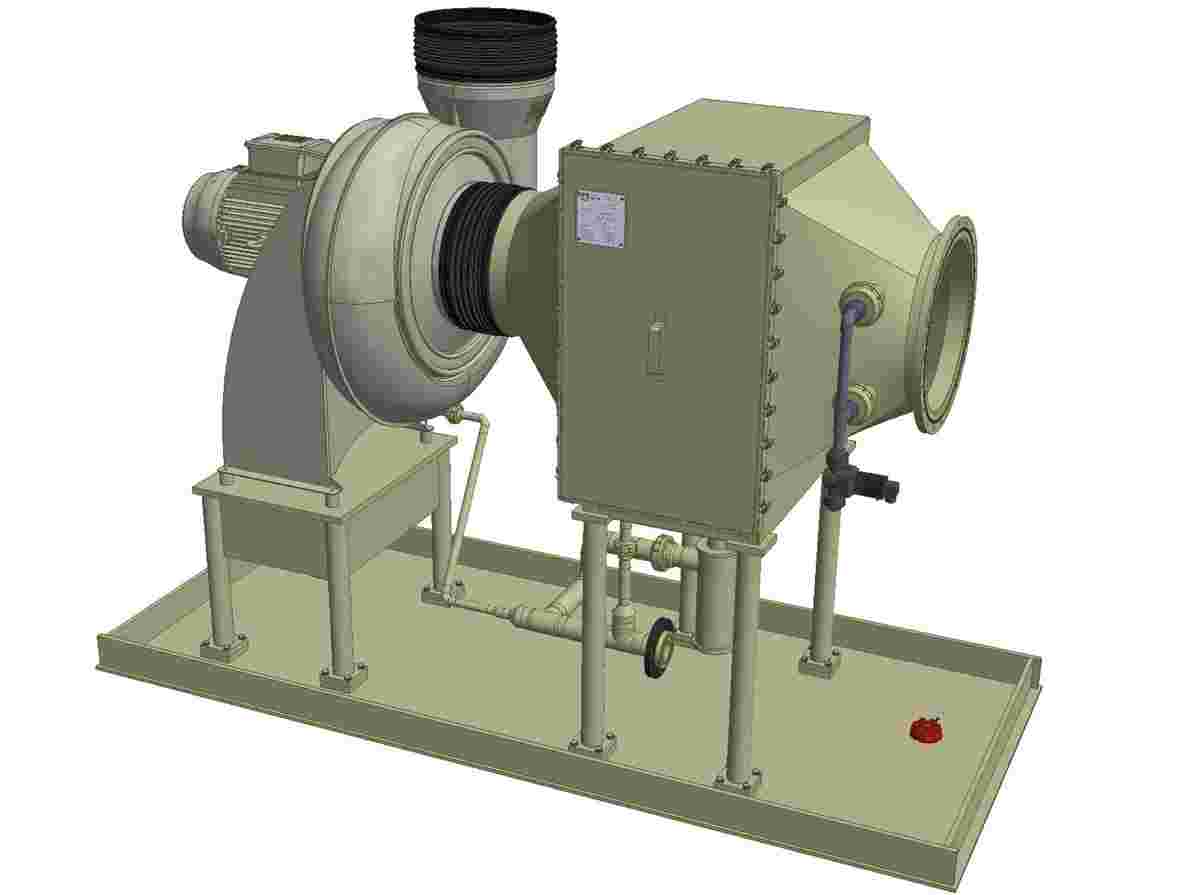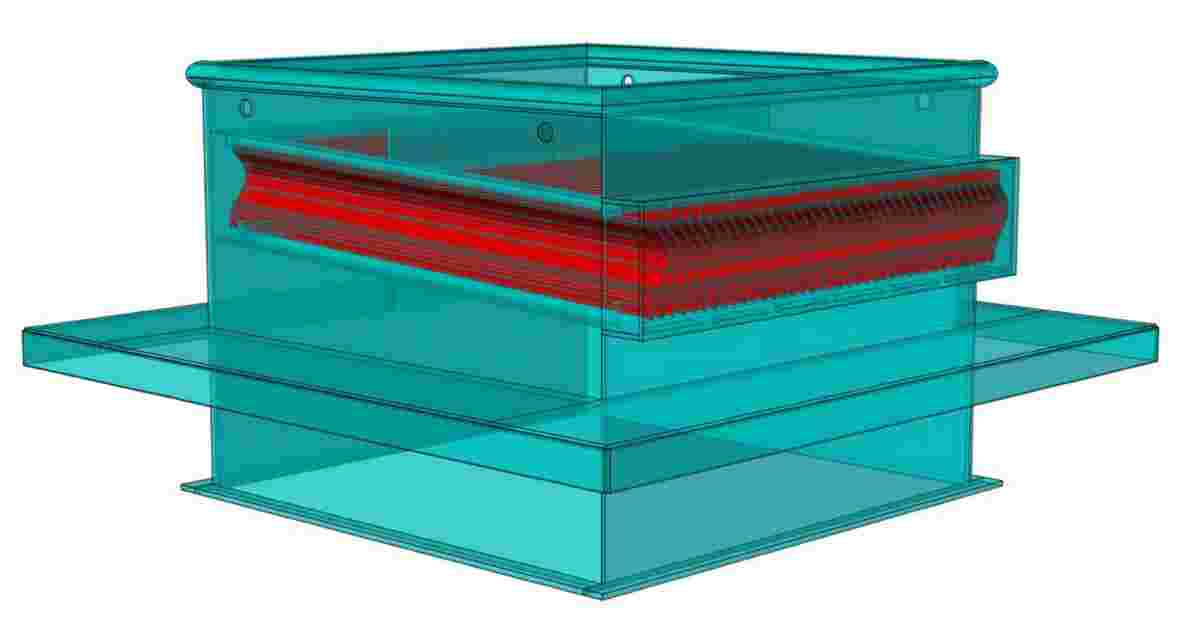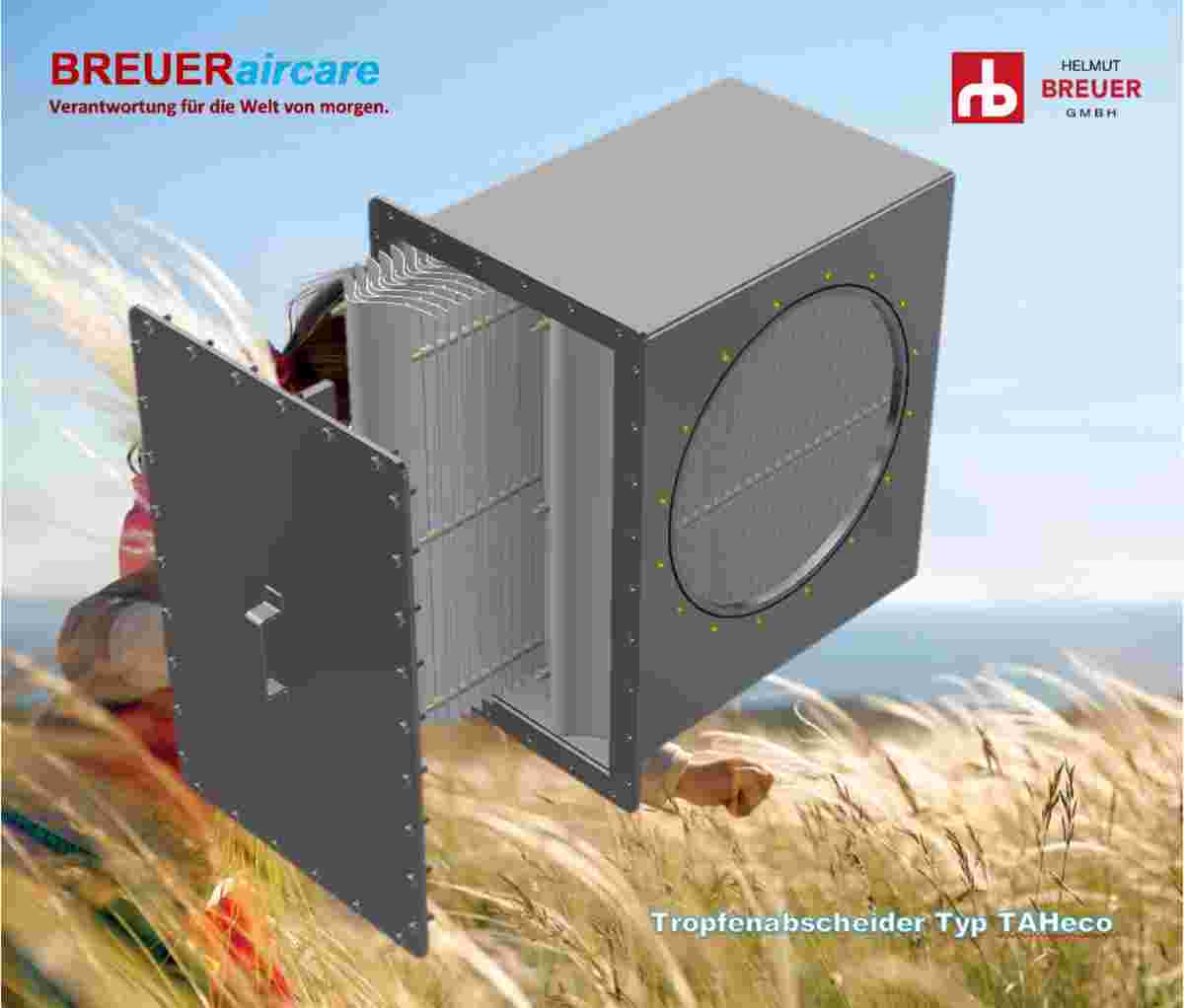
Plastic droplet separator.

The droplet separators are used to remove liquid particles from the exhaust air stream that are entrained with the extracted air or are created by condensation in the exhaust air duct. They operate according to the principle of inertia.
The need to separate these liquid particles (droplets) can arise for environmental or technical reasons. Furthermore, valuable substances can be returned to the process. Our droplet separators are often used in electroplating, for example.
When selecting from the various series, the smallest droplet size to be separated, the possible installation situation, and the degree of liquid particle loading in the air must be considered. BREUERaircare droplet separators are made of corrosion resistant thermoplastics. The choice of plastic type depends primarily on the medium, the operating temperature, and whether electrical conductivity of the housing is required. Materials: PE100, PP-H, PPs, PVDF, PVC, PE-el, and PPs-el.
Droplet separator Type TAHeco
- Lamella profile droplet eliminators with horizontal flow.
- Simple, standardized design.
- Two laterally removable lamella packs.
- 22 sizes for exhaust air flow rates from 300 to 100,000 m3/h.
- Droplets > 13 µm.
Suitable for many applications in industry, surface treatment, and process engineering.
Droplet separator Type TAHpro
- Lamellar profile droplet eliminator with horizontal flow.
- Two laterally removable lamella packs. Optional additional wire mesh fine separator (demister).
- Optionally with purging device with spray in the gas inlet.
- Opening with quick-release fasteners.
- Air-side connections are flexible in type and size.
- 22 sizes for flow rates from 600 to 130,000 m³/h.
- Limit droplet > 10 µm or > 8 µm with wire mesh (demister)
For high separation requirements. Also available in a special version as a chromic acid separator.
Rain drop separator
The rows of profiled slats of the rain separator prevent rainwater from entering the roof when fresh air is drawn in or discharged onto the roof for larger air volumes, with minimal pressure loss. The collected rainwater is drained to the roof via a collector.


Droplet separator unit – installation example

 Englisch
Englisch Deutsch
Deutsch

